The first area I would like to explore during my research about Social Communication Design is the topic of Design Activism, beginning with the medium of the poster.
Over the history of mankind, humans have utilized protest art to demonstrate political and social discontent: “From the earliest broadsheets in the 1500s to engravings, photolithographs, prints, posters, murals, graffiti, and political cartoons, these endlessly inventive graphic forms have symbolized and spurred on power struggles, rebellions, spirited causes, and calls to arms” (McQuiston, 2019). Especially during the last century, political protests have reached the public via poster art, hanging from walls and lantern posts, calling their onlookers for action. Bruinsma (as cited in Salmon, 2021, p.11) describes the purpose of those posters as “to cause a small but engaging short-circuit in the mind of the beholder, triggering them”.
To better understand the medium and see if/how it can have an influence on the public, it might be worthwhile to first observe some historical examples of activist posters. May scholars name the graphic activists of the “Ateliers Populaire”, a collective of students operating during the 1968 uprisings in Paris, as an important trailblazer for politically motivated design. On a blog entry on Letterform Archive, the formation of the collective is described as follows:
“In May 1968 nearly a million students and workers almost shut down France and toppled its government. They had no centralized organization, no single charismatic leader, no trade union nor political party. Their common ideology was a reaction against a Charles de Gaulle regime they saw as increasingly totalitarian, and they took to the streets. They acted through mass demonstrations and labor strikes, and without a core organizing committee their main method of communication was the poster. The production of posters was initiated on May 14 by a group of students from the Ecole National Supérieure des Beaux Arts. Seeking a way to get involved with the protests already underway, they occupied the lithography studio at the venerable art school.”
(Coles, 2018)
When looking at the posters, the pictogram-like shapes and the use of a simple signal colour catch your eye. This graphic language of posters produced by the “Ateliers Populaire” can be attributed in part to the printing facilities the students had access to. After starting of the production of their posters via lithography, the students later switched to silkscreen printing, which was more affordable, efficient, and allowed a vast production volume (Coles, 2018). In addition, the element of humour and irony was vital to their graphic language, which served the overall purpose of “translating sometimes rather complex social and political issues into deceivingly simple, but deeply referential imagery, readable for an informed, visually literate audience” (Bruinsma, 2021, as cited in Salmon, 2021, p.12).

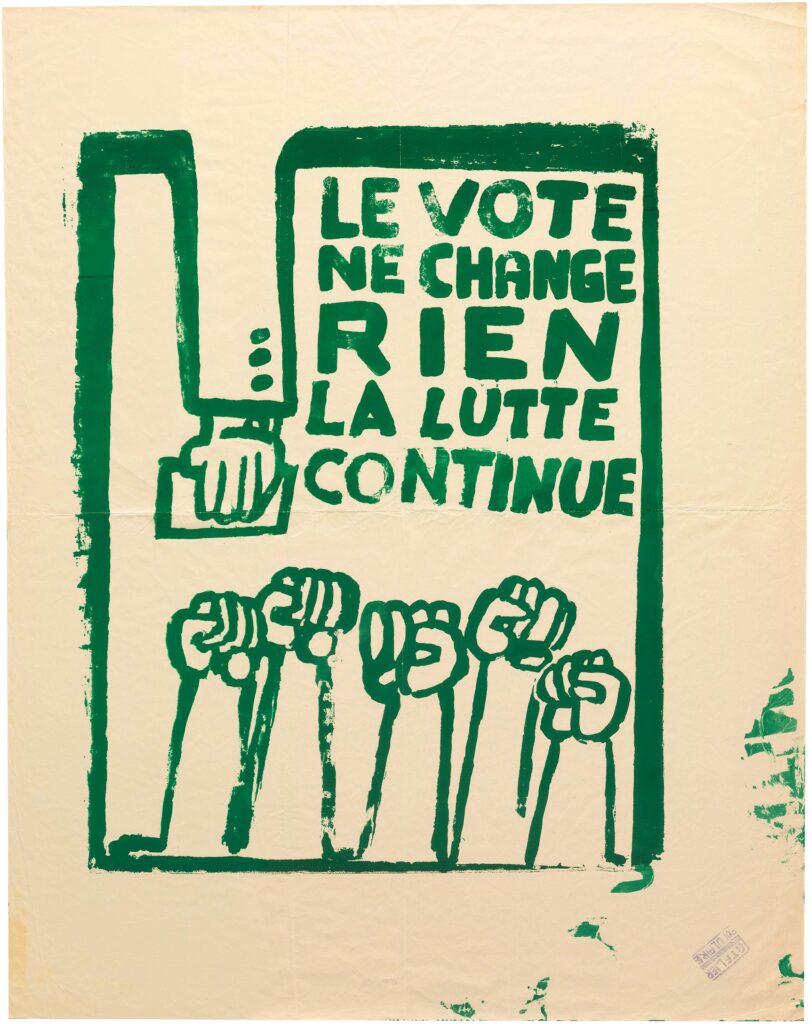

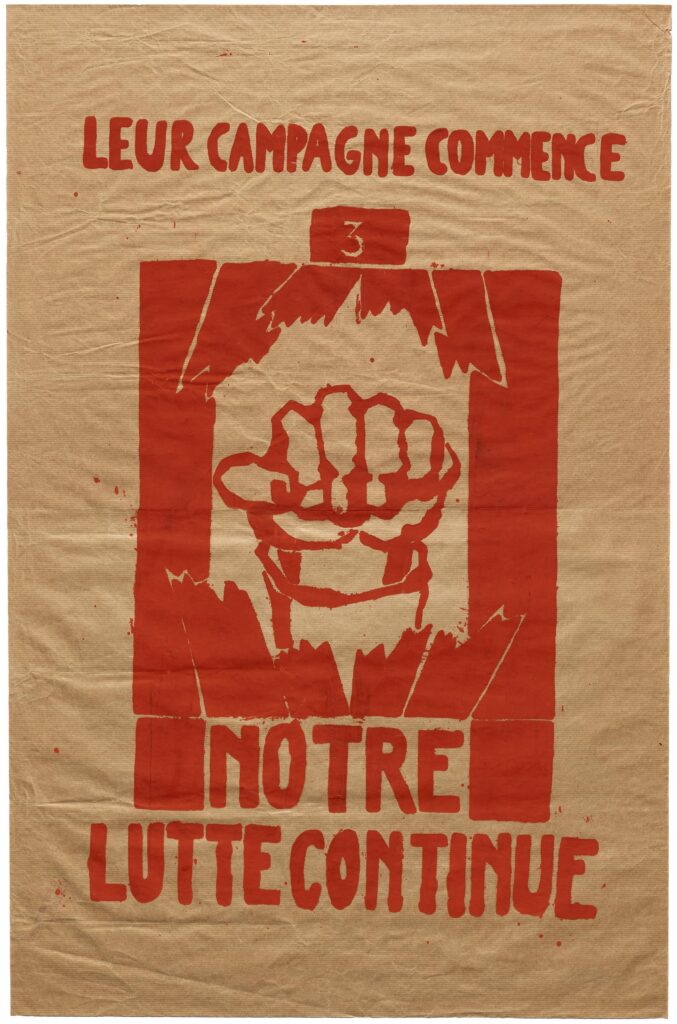
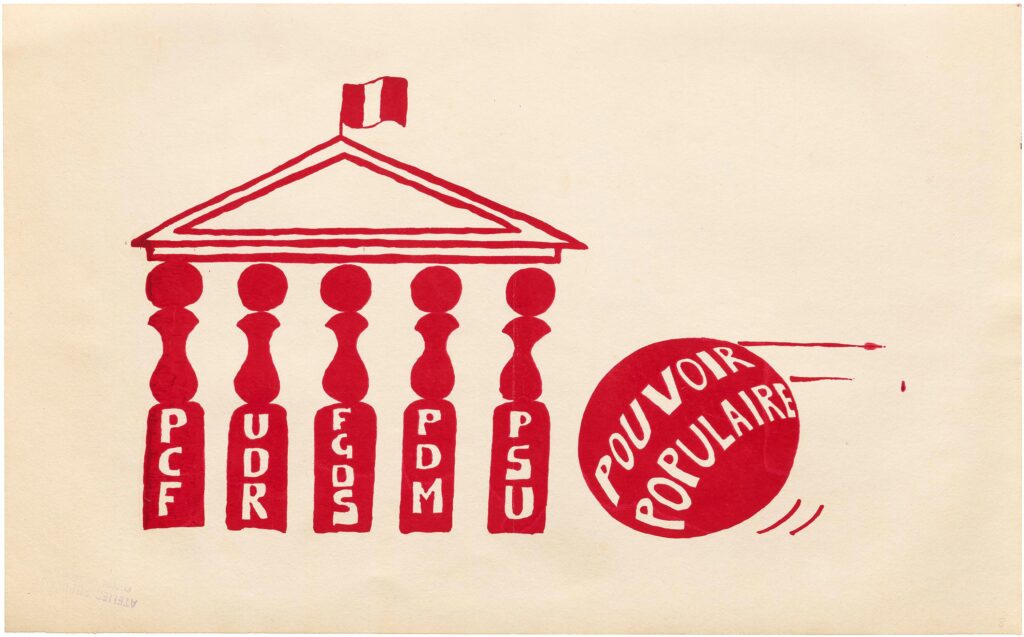
Image source: letterformarchive.org/news/view/atelier-populaire-posters-of-may-1968
References:
- Coles, S. (17. 04 2018). Letterform Archive. Von https://letterformarchive.org/news/view/atelier-populaire-posters-of-may-1968 abgerufen 23.11.2022
- McQuiston, L. (12. 11 2019). Princeton University Press. Von https://press.princeton.edu/ideas/a-look-inside-protest-a-history-of-social-and-political-protest-graphics abgerufen 23.11.2022
- Salmon, B. (2021). Graphisme en France 2021 – Graphic design and society. Centre national des arts plastiques.
Further examples include the protest against a huge array of issues, ranging from women’s equality, the fight for LGBTQ rights, protests against wars, solidarity with POC and much more. Below, I have listed some examples that are considered to be influential or have caught my eye:
Hilda M. Dallas: Votes for Women (1907)
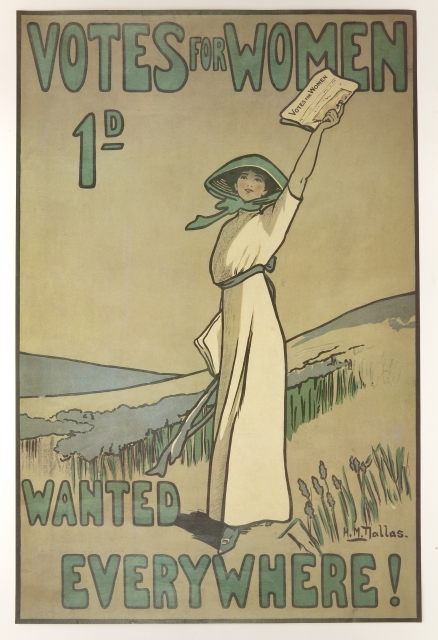
Image source: https://press.princeton.edu/ideas/a-look-inside-protest-a-history-of-social-and-political-protest-graphics
Suffrage Atelier (artist collective formed in 1909 to promote the women’s movement): What a woman may be and yet not have the vote (1913)

Image source: Suffrage Atelier, What a woman may be and yet not have the vote, c. 1913. Courtesy: Rex Shutterstock/Museum of London via https://www.frieze.com/article/pictures-defiant-art-protest-poster
See Red Women’s Workshop: Feminist posters (1974-1990)
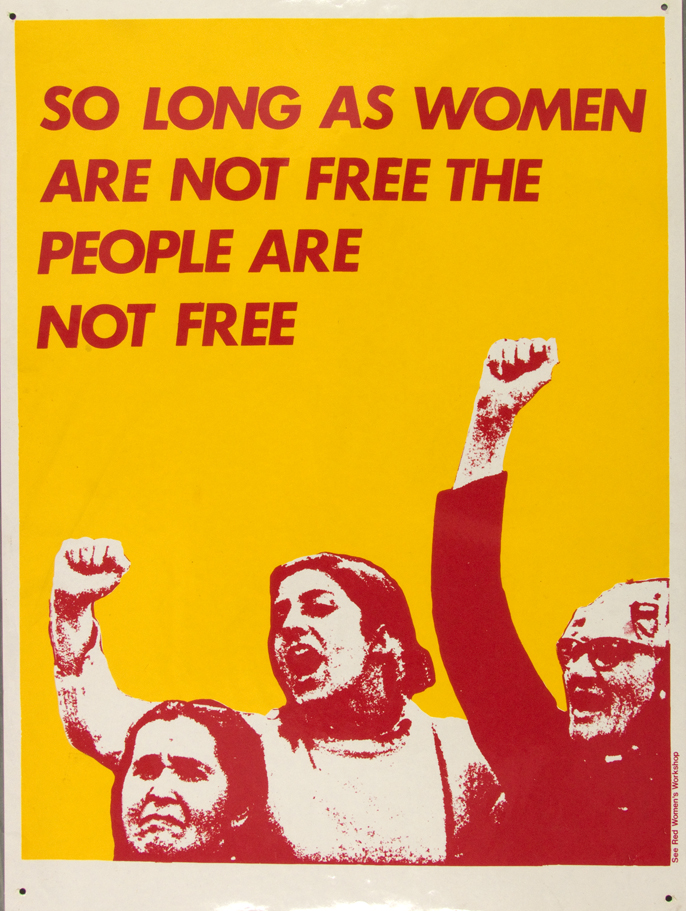
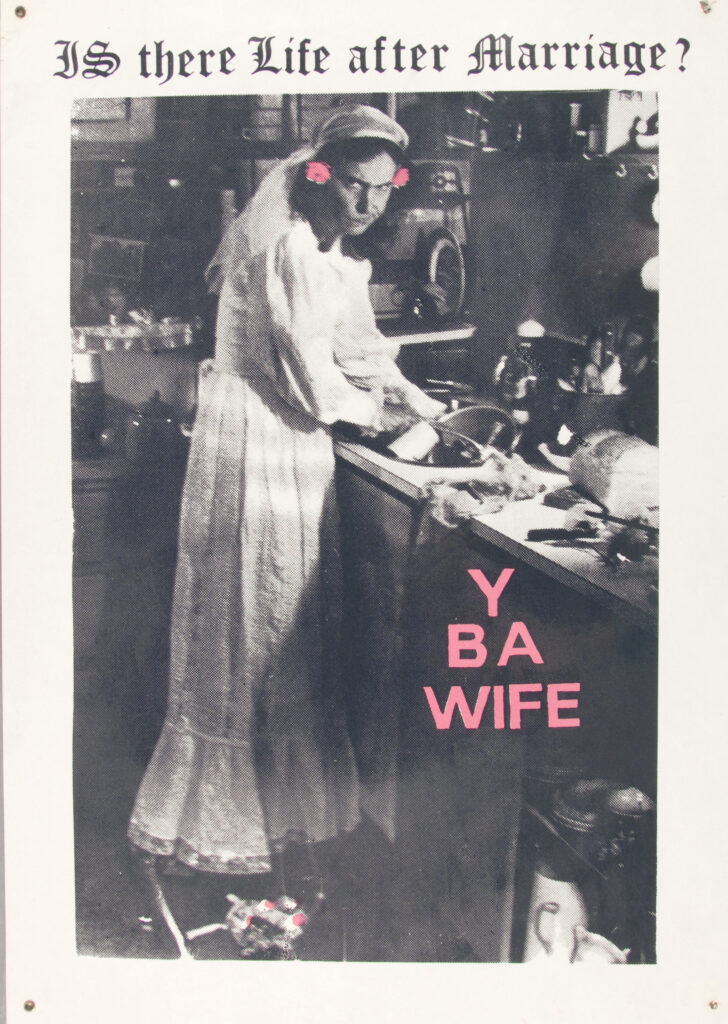
Image source: https://seeredwomensworkshop.wordpress.com/
Jesus Barraza, Mazatl and Melanie Cervantes: I Am Trayvon Martin (2013)
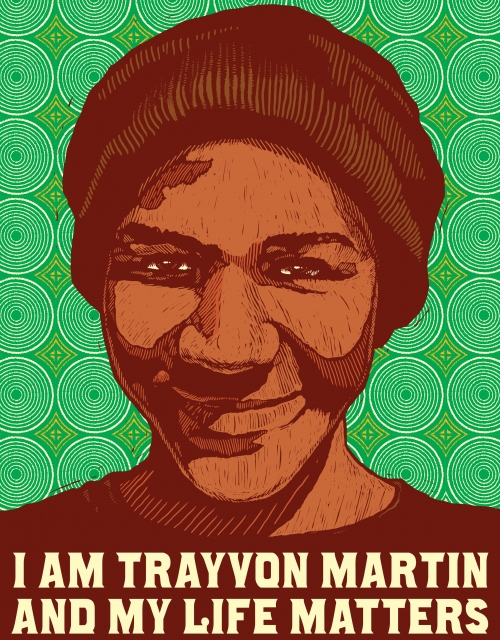
Image source: https://press.princeton.edu/ideas/a-look-inside-protest-a-history-of-social-and-political-protest-graphics
Artist Micah Bazant: Protect Kids Not Guns (2018) for March for Our Lives

Image source: Micah Bazant for Amplifier, Protect Kids Not Guns, 2018. Courtesy: Micah Bazant for Amplifier, 2018 via https://www.frieze.com/article/pictures-defiant-art-protest-poster